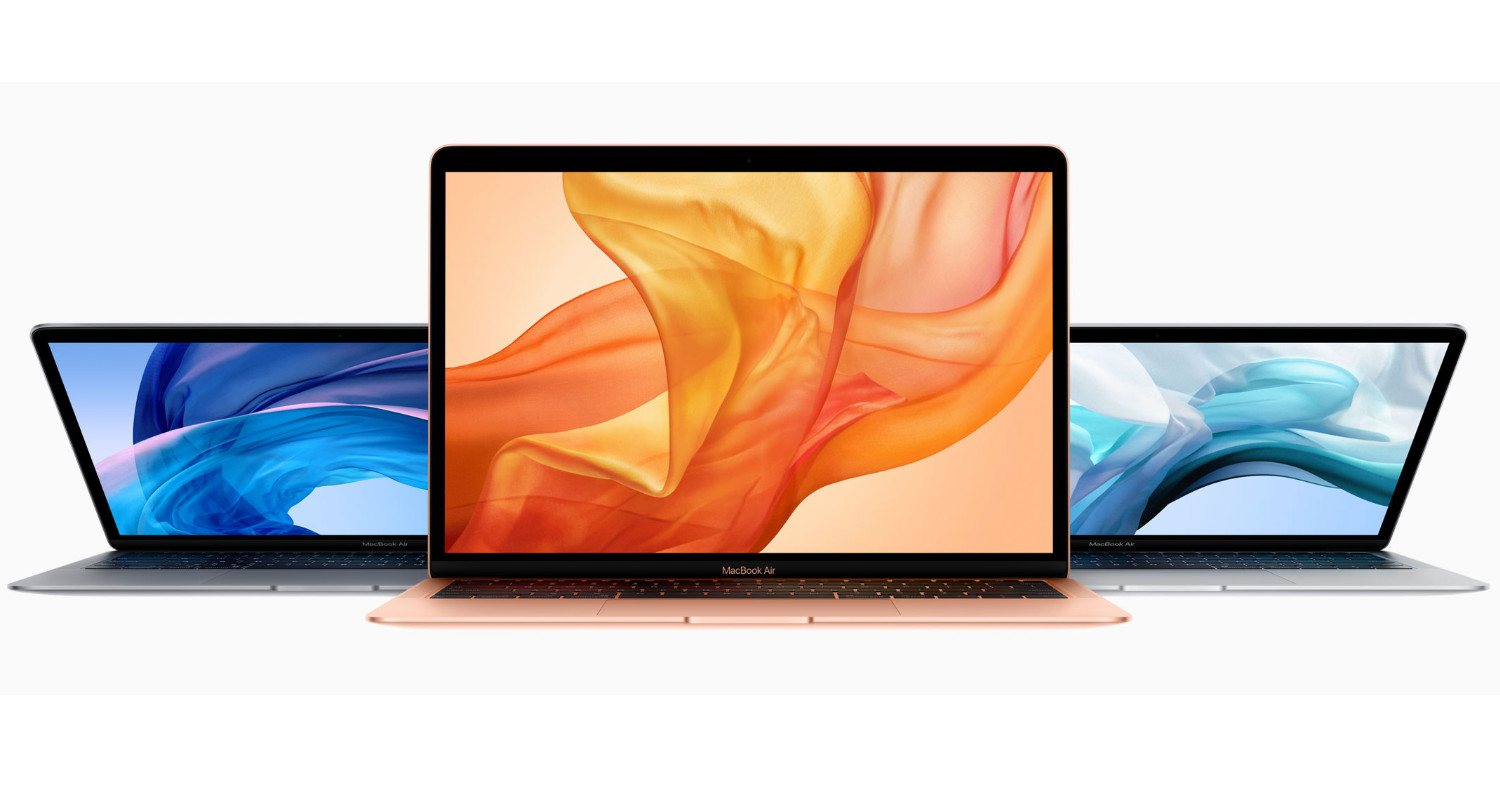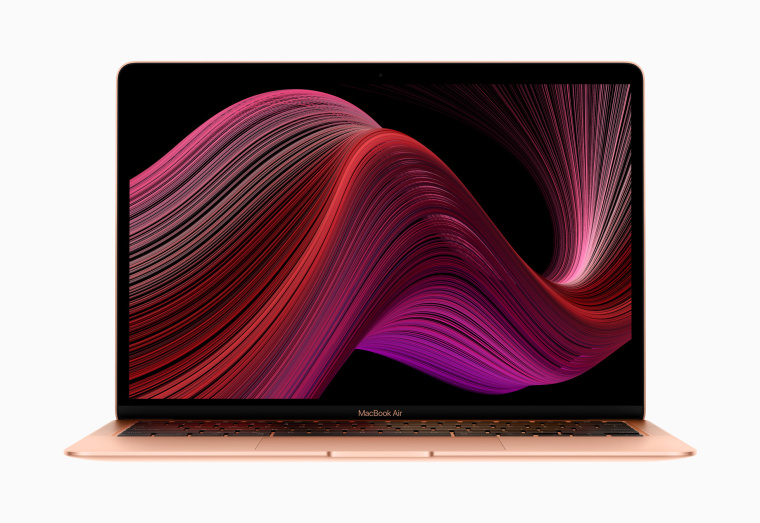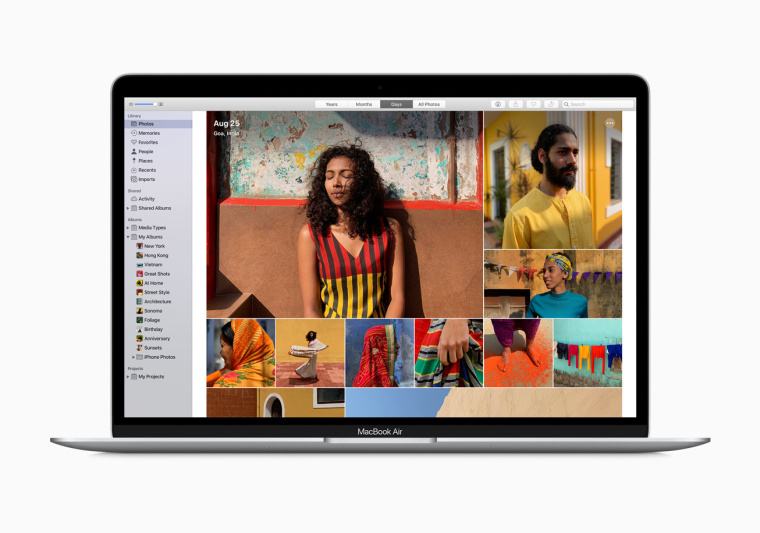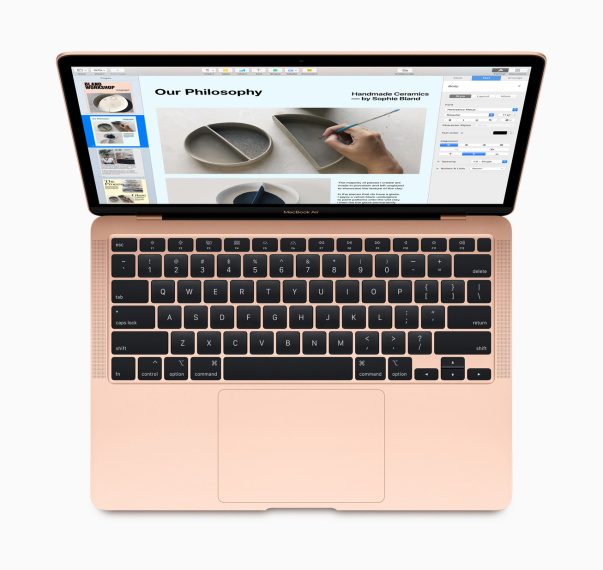Apple introduced the 2020 MacBook Air last week, updating one of its most popular Macs after less than a year. When we compare the current generation with the last generation and the one before that, a lot has really changed. If you have a 2018 or 2019 MacBook Air and are thinking about buying a new one, the lines below may be helpful.
Apple fundamentally overhauled the MacBook Air in 2018 with a complete (and long-needed) redesign. Last year the changes were more cosmetic (improved keyboard, slightly better display), this year there are more changes and they should really be worth it. So first, let's look at what has remained (more or less) the same.
It could be interest you

Display
MacBook Air 2020 has the same display as last year's model. It is therefore a 13,3″ IPS panel with a resolution of 2560 x 1600 pixels, a resolution of 227 ppi, a brightness of up to 400 nits and support for True Tone technology. What has not changed in the display in the MacBook as such, has changed in the ability to connect external ones. The new Air supports the connection of an external monitor with up to 6K resolution at 60 Hz. So you can connect to it, for example, Apple Pro Display XDR, which currently only Mac Pro can handle.
Dimensions
The MacBook Air is almost identical to what its two previous revisions looked like in 2018 and 2018. All models are the same width and depth. The new Air is 0,4 mm wider at its widest point, and at the same time it is roughly 40 grams heavier. The changes are mainly due to the new keyboard, which will be discussed a bit further down. In practice, these are almost imperceptible differences, and if you don't compare this year's and last year's models side by side, you most likely won't recognize anything.
It could be interest you

Specifications
One of the biggest changes to this year's model is what's inside. The end of dual-core processors has finally come and it is finally possible to get a quad-core processor in the MacBook Air, although it may not always turn out very well... Apple has used Intel Core i 10th generation chips in the new product, which offer a slightly higher CPU performance, but at the same time a much better GPU performance. In addition, the surcharge for a cheaper quad-core processor is not high at all and should make sense to everyone for whom the basic dual-core will not be enough. Compared to previous models, this is a big leap forward, especially with regard to graphics performance.
Faster and more modern operating memory has also been added to the better processors, which now has a frequency of 3733 MHz and LPDDR4X chips (versus 2133 MHz LPDDR3). Although its base value is still "only" 8 GB, an increase to 16 GB is possible, and this is probably the biggest upgrade that a customer buying a new Air can make. However, if you want 32GB of RAM, you need to go the MacBook Pro route
The very good news for all potential buyers is that Apple has increased the base storage capacity from 128 to 256 GB (while reducing the price). As is usual with Apple, this is a relatively fast SSD, which does not reach the transfer speeds of the drives in the Pro models, but the typical Air user will not notice this at all.
Keyboard
The second major innovation is the keyboard. After years of suffering, the extremely low-profile keyboard with the so-called butterfly mechanism is gone, and in its place is the "new" Magic keyboard, which has a classic scissor mechanism. The new keyboard will thus offer a better response when typing, longer operation of individual keys and, perhaps, much better reliability. The new keyboard layout is a matter of course, especially with regard to the direction keys.
It could be interest you

And the rest?
However, Apple still kind of forgets about some little things. Even the new Air is equipped with the same (and still equally bad) webcam, it also has a (for many limiting) pair of Thunderbolt 3 connectors, and the specifications also lack support for the new WiFi 6 standard. On the contrary, improvements should have occurred in the field of microphone and speakers, which although they don't play as well as those of the Pro models, but there is no such difference between them. According to the official specifications, the battery life has also decreased slightly (according to Apple by an hour), but the reviewers cannot agree on this fact.
Unfortunately, Apple still hasn't been able to improve the internal cooling system and even though it has been slightly redesigned, the MacBook Air still has a problem with cooling and CPU throttling under heavy load. The cooling system doesn't make much sense and it's a little surprising that some engineers at Apple came up with something similar and decided to use it. There is one tiny fan in the chassis, but the CPU cooling is not directly connected to it and everything works on a passive basis using internal airflow. It is evident from the tests that it is not a very effective solution. On the other hand, Apple probably doesn't expect anyone to use the MacBook Air for long, demanding tasks.




Regarding the cooling, there are various videos on the Internet on how to solve it. It seems to be a sw problem not a hw problem.
Can you please give a link?
Thank you